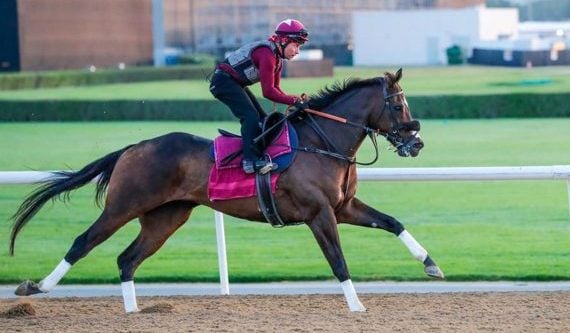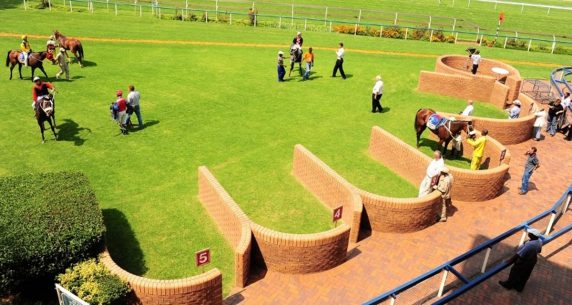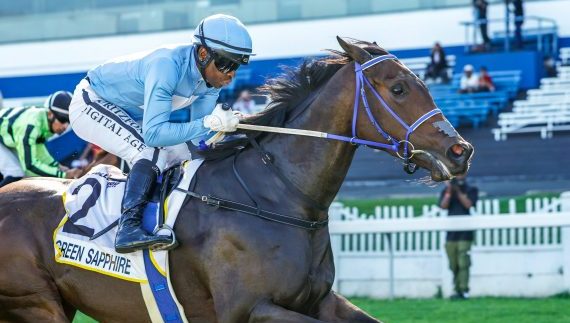It is high fashion but quite misleading to speak of the racing industry. Industries surely have a saleable end-product? The steel industry produces steel – the coal industry produces coal. Just like soccer, rugby, cricket and motor-racing are not industries either. They, like racing, are branches of the entertainment industry.
For this pearl of wisdom and reality, I can thank a remarkable man by the name of Phil Bull, whose biography I am reading at the moment. He is labelled a big gambler, a write and publisher of international repute, a successful racehorse breeder and owner, a political thinker and philosopher, and a longtime campaigner for reform in the sport of racing.
It was not only my personal endless hard-luck stories of being one out in any bet from a swinger to a Pick Six that drove me to borrow this fascinating book from my colleague Robyn Louw. I am also desperate to understand what makes this game tick.
Unlike all the subsidised bull (excuse the pun) and blatant Audie Murphy stories that we have all heard at one time or another from our local gambling experts and the tales of homes and holidays financed on the fiscal wisdom of punting, I am still to meet the man – or woman – that makes money punting and owning horses. Yet we keep coming back for more.
Bull, who died aged 79 in 1989, first published Timeform in 1948, and in spite of the cyclical peaks and valleys, was crowned the most successful punter of the modern era in the United Kingdom.
One of his favourites was: ‘You can’t construct good bets;you have to wait for them to come along. For a real bet, you must have the right horse, in the right place , at the right time. That’something you can’t contrive…’
But I digress and back to my original much bashed assertion that racing hinges on the entertainment dished out via the spectacle offered on-course and via Tellytrack, and through the gambling rand expended by the homeless man right through to people of the ilk of the super-rich like the Joostes, the Oppenheimers and the Ruperts. They are all the gamblers that feed the face of this sport. From the R2 swinger right up the line to spending R3 million on flesh and blood at a Sale or financing opulent breeding establishments. There are better options in life. Like putting the R2 in a jar every day and buying property and shares, rather than four legged grand guzzlers.
Oversimplified to a degree, the punters and the owners are the investors. The jockeys, the trainers, the officials, the administrators – and let us not forget our taxing Government , are the providers of the skills and thus notably also the receivers of the benefits.
It is this simple model that riles when one views the shenanigans and obstacles that face the sport every day. Take the Western Cape anorexic field sizes that led to the loss of much needed revenue this week. Who made the decision to abandon? Who speaks for the small owners? What is the genuine reason behind the doubtless politically inspired boycott? I have been told there is a bigger picture. Who is going to have the gonads to stand up and be counted?
Naturally any effort to remedy the ills of horseracing are to be lauded. It also makes no sense to treat the symptoms rather than the root causes and the switch to allocating barrier draws after acceptance with effect from the Kenilworth meeting on 28 March should work to a degree. But that is an Aspirin for a headache that will recur unless we test the eyes, have a brain scan and check what the real issue is. It might even be the cheap booze?
The Cape is not alone. That silly late jockey switch at Borrowdale on Sunday in the seventh race when Gavin Lerena jumped mounts from Officer Class to Syracuse and won on the latter, is just not entertainment and not acceptable in this day and age. The first most punters knew about it was at the 200m marker. I have heard of in play betting, but that takes the cake – and our tom.
A few weeks ago we had the Phumelela guys preaching the virtues of Zim racing and it makes sense for us to make it work for our Northern neighbours.
I asked the NHRA CEO Rob De Kock to throw some light on what may have led to the non-dissemination of the Lerena switch. He explained that it is the responsibility of the Racing Operator’s representative, in this case the Mashonaland Turf Club, to disseminate changes of jockeys, scratchings etc., which occur after the commencement of the race meeting.
True to his word, Mr De Kock instructed his Lieutenant, Denzil Pillay, to investigate and he came up with the following explanation which he also very courteously managed to squeeze into our print deadline
“ The Chief Stipendiary Steward furnished us with a copy of the communication that went out on Sunday morning. Attached is a copy of the email from Mashonaland Turf Club which indicates addresses to which the changes were sent. Further down the attachment is the betting and card changes. As you will note, communication went out at 11:18 from the Turf Club. If all parties got the scratchings then they would also have received the jockey changes as it is on the same sheet of paper.”
So somebody cocked up again. I have sent a copy of this note to Phumelela for comment and their response will be published in full next week.
This is a wonderful sport. But the punter and owner needs to take it back and make it their own. The rest of the zoo must fall into line and deliver what the investors demand and expect. Otherwise we are doomed and will find our entertainment elsewhere.
.
Rock Of Ages
An interesting article in the Independent Newspapers Racegoer pages caught my eye last week. Gold Circle scribe David Thiselton expostulated on the virtues and proud achievements of veteran Cape jockey Karl Neisius, who at age 55 is approaching the milestone of his 3000th winner after four decades in the saddle.
Neisius had his first winning ride in 1973 at Kenilworth on a Noble Chieftain filly called Glad Rag Doll, who was trained by Ralph Rixon. I was in Standard four then and remember standing at the rails most Wednesday and Saturday afternoons and, if my memory serves me well, Mark Truter also used to ride the little filly as an apprentice.
The story loses track when Thiselton states that current Gold Circle Chief Operating Officer Graeme Hawkins actually called Neisius’ first winning ride. I found that fact rather strange in view of Hawkins’ relative youth, masked these days only by his distinguished silver grey locks. By my calculations Graeme would only have been in Standard 9 or 10 then in Cape Town High School
I contacted Graeme Hawkins for clarity and he said that while he was definitely on course, he had not called the race. He is also only turning 57 this year – which makes my calculations close enough to accurate.
I would guess that the late great chain-smoking Sandy Bickett called the race. Sadly, after his many years behind the glasses, his retirement and passing a few years ago hardly caught the attention of anybody – beyond a death notice or two in the Cape Argus.
But that is how horseracing treats most of its stalwarts though.
.
Bit Of A Low Flyer!
Aanhouer wen! Congratulations are due to our colleague Robyn Louw who owns the game chestnut Sergeant At Arms who won his second race from just 13 starts at Arlington on Monday. The son of Right Approach enjoyed a peach of a balanced ride from replacement jockey Anthony Delpech to win the MR78 Handicap over 1800m under the hands. Most painful for most of us who were given the green light to climb in but rather watched and clapped, is the R10 tote win dividend.
Word has it that the effervescent Robyn is eyeing the Cape Winter Series, the Met and possibly even Meydan 2013. Sure it all depends on protocols and other factors – like maybe the little lad growing a set of wings in the next few months too.
But, as an owner, if you don’t live the big dreams, what’s the point of it all?
.
What’s In A Name?
Two interestingly named horses both won on debut recently. The Bezrin filly Kleintjie owned and bred by George Barker won at the Vaal at any price under Louis Nhlapo. Leon Erasmus trains the two year old who went off at 66-1 and romped home in great style over 1000m. She was apparently named in the memory of George’s late wife Kleintjie. A lovely touch and we wish him and Leon every success with her.
Afrikaans names have fallen by the wayside somewhat with the growing popularity of the African languages and I’m quite sure race-callers like Sheldon Peters prefer the Zulu names to the likes of Klein Bietjie Wyn and Fyndraai. In the seventies we had Hennie Petersen calling in the Cape and his tongue rolled with ease around names like the good stayer Kolskoot and Adrian Coetzer’s Blommelied.
Former trainer of The Apache, Gavin Van Zyl, sent the interestingly named Var filly Wounded Knee out to win on debut at Turffontein under Johnny Geroudis two weeks back.
Being out of the Al Mufti mare Indian Squaw, one wouldn’t be off target by believing that she may just have gotten her name from an awful incident at Wounded Knee Creek in 1890. The site, now designated a National Historic Landmark , was the scene of a massacre of Lakota Sioux by the US Cavalry.
But there is another angle to this name – and a far happier one at that.
The filly was bred by Ashley Parker’s Ascot Stud and was sold unnamed.
Apparently the owner had spoken to the breeder about the name and Parker said the horse had had a bad knee as a yearling, so it was most appropriate to name her Wounded Knee.








